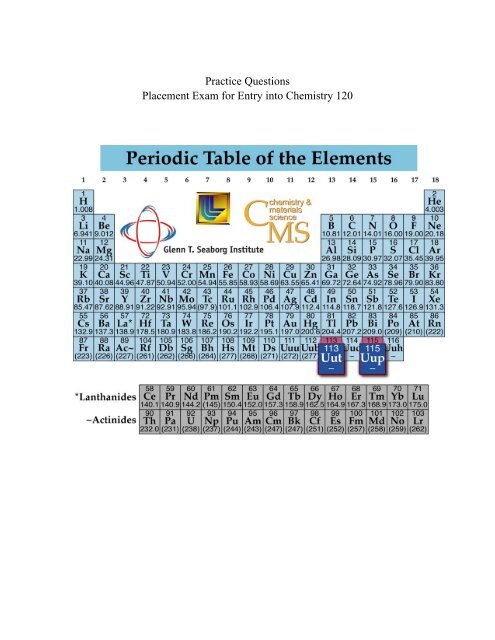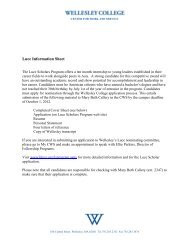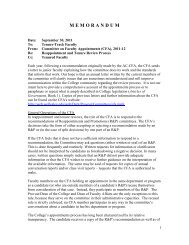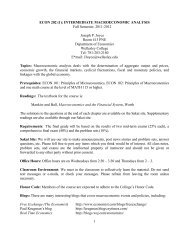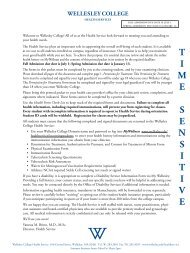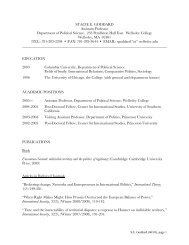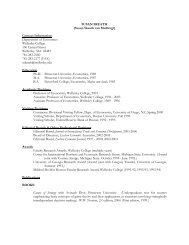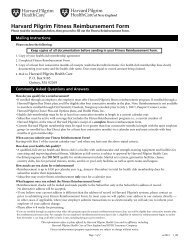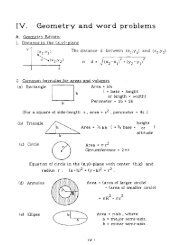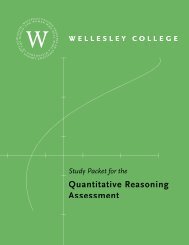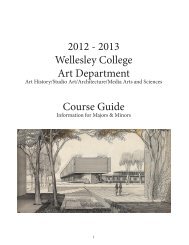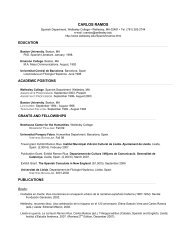Practice Questions Placement Exam for Entry into Chemistry 120
Practice Questions Placement Exam for Entry into Chemistry 120
Practice Questions Placement Exam for Entry into Chemistry 120
- No tags were found...
You also want an ePaper? Increase the reach of your titles
YUMPU automatically turns print PDFs into web optimized ePapers that Google loves.
<strong>Practice</strong> <strong>Questions</strong><strong>Placement</strong> <strong>Exam</strong> <strong>for</strong> <strong>Entry</strong> <strong>into</strong> <strong>Chemistry</strong> <strong>120</strong>
Potentially Useful In<strong>for</strong>mationAvogadro's number = 6.0221420×10 23h = 6.6260688×10 −34 J sc = 2.9979246×10 8 m/s1amu = 1.6605387×10 −27 kg1MeV = 1.60217646 ×10 −13 J1Å=10 −10 mcE= λν= hν2E = mch hλ = =p mvh( ∆x)( ∆p)≥4π12mv = hν−φ2−18− 2.179×10 JE n=2n∆E = q+ww=−p∆VH = E + PVq =∆ Hq = mc( ∆ T)q = C( ∆ T)K∆S⎛ ⎞= ⎜ ⎟⎝ P ⎠ocRTPKc osurr∆H= −TG = H − TSsys∆n∆G = ∆H − T∆SG = G + RT ln P∆G = ∆G + RT ln Q∆G = −RT ln K ∆H∆Sln K =− +RT RK = 273.15 + °CR = 8.314 J mol −1 K −1= 0.0821 liter atm mol −1 K −1= 1.987 cal mol −1 K −11 atm = 760 TorrPV = nRTaA +bB → cC +dDd A dCrate = − 1 [ ] 1 [ ]=a dt c dtxRate = k [ A] [ B]1 1− = kt[ A] [ A] 0ln[ A] = − kt+ln[ A] 0[ A] = - kt+[ A] 0t12 /t12 /t12 /1=kA [ ][ A]=2k000.693=kk = Ae− EaRTy
Question 1The production capacity <strong>for</strong> acrylonitrile (C 3H 3N) in the United States is over 2 billion poundsper year. Acrylonitrile, the building block <strong>for</strong> polyacrylonitrile fibers and a variety of plastics, isproduced from gaseous propylene (propene), ammonia, and oxygen:2C 3H 6(g) + 2NH 3(g) + 3O 2(g) → 2C 3H 3N(g) + 6H 2O(g)Assuming the reaction goes to completions, how many moles of acrylonitrile can be producedfrom a mixture of 5 moles of propylene (propene), 2 moles of ammonia, and 2 moles of oxygen?
Question 2Succinic acid, an intermediate in the metabolism of food molecules, has a molar mass of 118.1 g.When 1.926 g of succinic acid was dissolved in water and titrated, 65.20 mL of 0.5000 M NaOHsolution was required to neutralize the acid. How many acidic hydrogen atoms are there in amolecule of succinic acid?
Question 3(a) The "stars" inside a firework produce colored flames. Stars that contain barium producegreen flames, stars containing sodium produce yellow flames, and stars that contain copperproduce blue flames. Why do the different elements produce different colored flames?(b) The gas in interstellar space consists primarily of hydrogen atoms at such low densities thatextremely high quantum states can be attained. In particular, transitions from the n=110 ton=109 <strong>for</strong> the hydrogen atom have been detected. Calculate the wavelength of the lightemitted when an electron undergoes such a transition.
Question 4(a) Fill in the energy level diagram (below) <strong>for</strong> the carbon atom. Use arrows to representelectrons.(b) Which three rules did you follow in answering question (a)
Question 5Use Lewis structures and VSEPR to predict the shapes and bond angles of the followingchemical species. In addition, specify whether the molecule or ion will possess a dipole moment.Indicate the <strong>for</strong>mal charges, if any, on both Lewis structures. The central atom is underlined ineach case.(i) CS 2(ii) SeF 4
Question 7(a) State Le Chatelier’s principle(b) A mixture containing 3.9 moles of NO and 0.88 moles of CO 2 was allowed to react in a flaskat a certain temperature according to the equationNO(g) + CO 2 (g) NO 2 (g) + CO(g)At equilibrium 0.11 mole of CO 2 was present. Calculate the equilibrium constant K c <strong>for</strong> thisreaction at this temperature.
Question 8A student who has but a superficial knowledge of thermodynamics comes to you with thefollowing question:The equilibrium constant K p <strong>for</strong> the reaction2 H 2 (g) + O 2 (g) 2H 2 O(g)is 5 x 10 41 at 25 °C. I learned in class that a very large equilibrium constant indicates that thereaction overwhelmingly favors the <strong>for</strong>mation of product. However, despite this fact, I knowthat a mixture of hydrogen and oxygen gases can be kept at room temperature, 25 °C, withoutproducing any detectable amount of water. I am confused! Please explain.
Question 9(a) What evidence do we have that not all collisions lead to a chemical reaction.(b) Biological reactions nearly always occur in the presence of enzymes, which are verypowerful catalysts. For example, the enzyme catalase increases the rate constant <strong>for</strong> thereaction 50 million times! If the uncatalyzed reaction has an activation energy of 72 kJ/mol,what is the activation energy of the catalyzed reaction (both occur at 298K)? You canassume that A remains constant.
QUESTION 10It has been said that every breath we take, on average, contains tens of millions of moleculesexhaled by Wolfgang Amadeus Mozart (1756 – 1791). The following calculations demonstratethe validity of this statement.(A) Calculate the total number of molecules in the atmosphere. Assume that the mass of theearth’s atmosphere is 5.25 × 10 18 kg and the molar mass of air is 29.0 g/mole.(B) Assuming the volume of every breath (inhale or exhale) is 500 mL, calculate the number ofmolecules exhaled in each breath at 37 °C, which is the body temperature.(C) If Mozart’s lifespan was exactly 35 years, what is the number of molecules he exhaled in thatperiod. Assume that the average person breathes 12 times per minute.(D) Calculate the fraction of the molecules in the earth’s atmosphere that were breathed out byMozart. How many of Mozart’s molecules do we breathe in with every inhale of air? Roundoff your answer to one significant figure.(E) Calculate the partial pressure of Mozart’s exhaled air in your inhaled air(F) List three important assumptions in these calculations.


